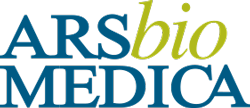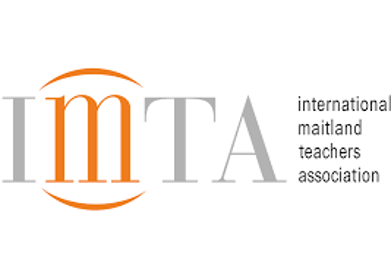The Maitland Concept of Manual Therapy ®
In the past, the culture of physiotherapy in the musculoskeletal field was secondary to orthopedics, based on the so-called biomechanical model, which often demonstrated its diagnostic and therapeutic limitations. In modern physiotherapy, with the advancement of the biopsychosocial model and new knowledge about pain, the interpretive framework of musculoskeletal disorders has become enriched, becoming more responsive to the individual’s needs.
The broadening of the cultural horizon has allowed the development of specific knowledge by physiotherapists, increasingly affirming their professional autonomy and making them a complementary figure to the medical field, rather than just auxiliary.
The Maitland Concept is an internationally recognized and practiced rehabilitation methodology by physiotherapists specifically trained and highly qualified to manage neuro-musculoskeletal dysfunctions. It is referred to as a Maitland Concept rather than Maitland techniques, as the pivotal aspect lies in the model of thought and its clinical decision-making process, which form the basis of the examination and treatment procedure.
Originating in Australia by Geoffrey Maitland, an Australian physiotherapist and co-founder of the International Federation of Orthopedic Manipulative Therapists (IFOMT), this concept is a cornerstone of modern manipulative physiotherapy. It is firmly established in the medical field, and its strength lies in its flexibility and openness, allowing the therapist to place the patient with the uniqueness of their problems at the center of the clinical reasoning process.
What sets it apart is the combination of individualized and specific patient treatment, coupled with the therapist’s clinical experience, always in line with the latest scientific discoveries (EBM = Evidence-Based Medicine) and IFOMPT standards. In addition to joint mobilization and peripheral and spinal manipulations, the Concept employs neurodynamic techniques, retraining, and self-treatment exercises adapted specifically, taking into account both the International Classification of Functioning, Disability, and Health (ICF) during the assessment phase and an examination of the bio-psychosocial sphere of each individual patient.
What does a treatment with the Maitland Technique entail?
HISTORY TAKING: The initial phase involves a detailed interview to understand the patient’s current issue and its impact on daily life, along with their recent and remote medical history. The patient’s description of the problem is crucial for the physiotherapist, as it helps in identifying predisposing factors involved in the onset and maintenance of the issue: physical/biomechanical, genetic/hereditary, psychosocial, environmental, and behavioral factors. This aids the physiotherapist in forming initial treatment hypotheses, which are further evaluated through a comprehensive clinical examination. Establishing effective communication is essential to make the patient comfortable and gather all necessary information.
CLINICAL EXAMINATION: This is followed by a detailed clinical assessment, including postural, motor, and functional evaluations aimed at identifying significant objective parameters. These parameters are evaluated in the same session and subsequently through continuous reevaluation. Differential and orthopedic tests guide the physiotherapist toward addressing the primary causes, which may not necessarily align with the symptomatic area, thus avoiding solely addressing the effects of the issue (which may otherwise recur shortly). Due to the specificity of each patient, even seemingly similar conditions often require different tests, approaches, and treatment techniques. While medical diagnosis provides information primarily about the involved structure and the relevance of the condition, as well as any contraindications or precautions, the physiotherapist utilizes their clinical examination, combined with this information, to perform an accurate assessment of movement dysfunction and decide on the scope and intensity of the treatment to be administered.
Main Areas of Application
This concept can be applied in both acute and chronic phases to all neuromusculoskeletal structures of our body. Here we list just a few examples of the most common pathologies, further emphasizing, however, how vast the field of application of this methodology is.
- Lower back pain and disc problems;
- Pain and issues in the cervical region;
- Arthritis;
- Joint pain and stiffness (shoulder/knee/hip/ankle etc.);
- Headaches;
- Irritation of neural components (radiculopathies/cervicobrachialgia/sciatica/carpal tunnel syndrome/Morton’s neuroma etc.);
- Muscle weakness;
- Tendonitis;
- Lateral or medial epicondylalgia of the elbow;
- Fractures;
- Post-surgical treatment;
- Tendon and ligament injuries.
The list of indications illustrates that manual therapy is not limited to treating the joint aspect of a pathology. Alongside the function of the muscular system, the function and mechanosensitivity or mobility of the nervous system are also examined and evaluated. When even recent knowledge of pain physiology contributes to therapeutic decision-making, an individualized treatment plan can be developed for each patient. Teaching the patient to become aware of their own body and make necessary changes to their daily activities and social life is as important as the specific manual techniques used in treatment. The patient becomes an accomplice in their healing process by adopting the perspective of self-management, performing exercises or tasks assigned by the physiotherapist.
The Treatment
- Education, which has the primary goal of modifying the patient’s beliefs through a reconceptualization of pain, emphasizing that the perception of pain does not necessarily arise from tissue damage.
- Mobilization techniques reproducing physiological and accessory movements of the vertebral and peripheral joints (hip, knee, ankle and foot, temporomandibular, shoulder, elbow, wrist, and hand);
- Mobilization techniques of the neural system (neurodynamics);
- Therapeutic exercise, Retraining, Strength & Conditioning;
- Explanations on sources and mechanisms that trigger the problem/symptom;
- Postural corrections, adjustments to be made in daily activities and sports;
- Exercises and advice for patient self-management at home, aimed at maintaining the treatment result over time through an active and healthy lifestyle.
We are constantly encouraged to integrate our knowledge and skills with current scientific evidence, ensuring that the patient receives specific and effective treatment for their particular situation: for this reason, the Maitland concept of neuromusculoskeletal physiotherapy is a dynamic concept that requires constant updating.
Do you need a medical visit or an exam?
Choose the best care for yourself
Choose the best care for yourself




